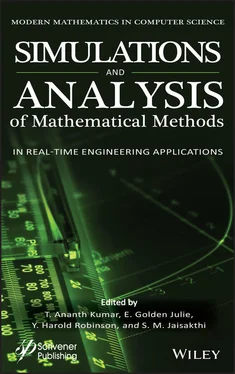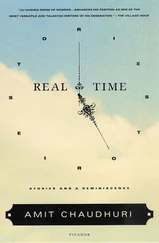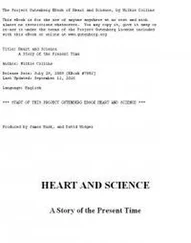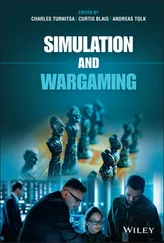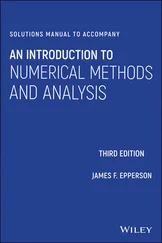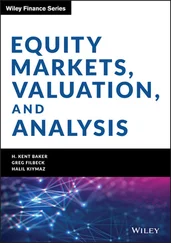Chapter 1deals with Investigations on Different Mathematical Models in Machine Learning and Artificial Intelligence. It starts with a discussion about knowledge-based expert systems. It contains primitive representation and primitive inference. This is followed by problem-solving techniques and a mathematical model of classification algorithms. This chapter discusses various mathematical algorithms like Markov chain model, automated simulation algorithms, KNN, SVM and comparison analysis of KNN and SVM. Finally, it describes the SEIR model for COVID-19.
Chapter 2mainly discusses edge computing optimization using mathematical modelling. It includes edge computing architecture, challenges, motivation and research direction. This is followed by Computational offloading in edge computing applications, classification, mathematical schemes like Markov chain-based schemes, hidden Markov model, Qos and optimization. The author then discusses Deep Learning Mathematical Models and Evolutionary algorithm in edge computing. Chapter 3discusses various cryptography approaches used in cloud computing based on a mathematical model. This chapter starts with an introduction to IoT and the cloud, integration and application. It is followed by a discussion of the data computation process and data partition. This includes Shamir Secret (SS) Share Algorithm for Data Partition and data encryption; AES algorithms with results are discussed.
Chapter 4deals with Security and Privacy Preservation in Edge Computing Platforms. It contains key management schemes and secure IoT-based edge computing. For providing maximal security the authors conducted an extensive exploration on adoption of blockchain technologies across edge computing networks and privacy preservation practices. Finally, they explore the machine learning approaches and advancements of on-device intelligence in edge computing infrastructures. Chapter 5is about Mouth Brooding Fish Approach (MBF) for Placing Sensors in Structural Health Monitoring System. MBF can handle a wide scope of worldwide streamlining issues and has the probability to be utilized to take care of entire issues since it depends on a certifiable phenomenon. The combination of MBF-ILS algorithm improves the optimal sensor placement and hence reduced the usage of more sensors. Due to the ILS algorithm, there is a perfect gap maintained between the global and local best solution. So this will increase the convergence speed of an algorithm.
Chapter 6mainly deals with the impact of the heat source/decrease effects on convective fluid movement beyond an inclined vertical plate in the field. Disruption techniques regulate the fluid velocity, temperature, and concentration equations in terms of dimensional parameters. Next the authors discuss Mathematic Formulation and Physical Design. Finally they discuss finding with graph. Chapter 7focuses on Application of Fuzzy Differential Equations in Digital Images via Fixed Point Techniques. It begins by discussing the basics of Fuzzy logic methods, which seem promising and useful in drug research and design. Digital topology is a developing field that uses objects’ topological properties to relate to 2D and 3D digital image features. The fixed-point theorem due to Banach is a valuable method in metric space theory; This chapter contains well-known fixed point theorem for studying the nature of digital images. That is established by applying the concept of fuzzy numbers. Sufficient conditions are also determined to get the desired result.
Chapter 8discusses Novel Deep Learning Approaches in Cyber security and Digital Forensics. Digital forensics play a vital role in solving cybercrime and identifying the proper solution for the threat that occurs in the network. It includes Biometric analysis of crime scene traces of forensic investigation. Forensic science holds a major position in all the informative and scientific domains due to its significance in social impacts. Varieties of data forensic analytical methods were proposed by various researchers, much concentrating on the domain of physics. Better security can be provided for forensic science through the cryptographic algorithms which perform the authentication verification process effectively. Chapter 9deals with Mathematical Models for Computer Vision in Cardiovascular Image Segmentation. It gives a detailed review of the state of the art through practitioner processes and methods. Three popular imaging models offer a detailed summary of these DL strategies, providing a broad spectrum of current deep learning methods designed to classify various cardiac functional structures. In the three methods, deep learning-based segmentation approaches highlighted future promise and the existing shortcomings of these methods of cardiac segmentation based on deep learning that may impede broad practical implications. Deep learning-based approaches have made a massive impact on the segmentation of cardiac images but also raise awareness and understanding problems that demand significant contributions in this area.
Chapter 10discusses Modelling of Diabetic Retinopathy Grading Using Deep Learning. It contains a deep introduction about Diabetic Retinopathy Grading and a brief review of related work done by various authors. The authors show the application of deep learning to predict the DR from the retinal images. They propose a hybrid model and presented a CNN-LSTM classifier for the DR classification using the DRDC dataset. The proposed hybrid model comprises the CNN- LSTM network and has better accuracy. This approach is faster and obtained an accuracy of 98.56% for the DRDC dataset. Also, the training and validation loss of the hybrid model is 0.04 and 0.06, respectively. The AUC is measured around 99.9%, demonstrating the reliable performance of the hybrid system. Overall processing time of the proposed hybrid system is around seven minutes.
Chapter 11describes the Novel Deep-Learning Approaches for Future Computing Applications and Services. After their introduction, the authors discuss architecture, auto encoder, Convolutional Neural Network (CNN), hierarchical of layers and supervision of mastering as the important factors for booming a programme for learning. The level of layers is important for proper monitoring and the classification of data shows the advantages of keeping the database. In the current and forthcoming period, richness learning could be performed as a useful safety application through facial recognition and mixed speech recognition. Furthermore, electronic image processing is a kind of research discipline that can be used in several locations. Chapter 12gives full analyses of the magnetic field, substance and therapeutic utility effects, the study-Absolute convective motions of a viscous, impenetrable, and electrically regulated fluid moving a slanting platter through a powerful media, free stream speed can obey the exponentially expanding small disturbance rule. Skin pressure is enhanced by the increase of (Gr), (Gc), (Ko) and (α), and is minimized by the effect of (M)(β) and (α). The amount of Nusselt rises with Ec, while under the control of (Pr) and (Q), it decreases.
Chapter 13describes Paddy crop cultivation in one of the foremost financial maneuvers of the Southern Province of India. Such Paddy crops are influenced by the assault of pest and the disease influenced by them. The authors discuss an efficient pest identification framework based on histogram-gradient feature processing, and deep CNN algorithm with SVM classification is proposed for improving paddy crop cultivation. A deep CNN algorithm is used for noise reduction in unclassified pest images to improve classification under linear SVM. The identification of pest from the de-noised images is performed using a linear SVM classifier along histogram variants embedded with gradient feature. The descriptors feature such as SIFT, SURF, and HOG are computed for all classifiers. It is found that the proposed methodology has evidenced to achieve improved classification when compared with all other existing algorithms.
Читать дальше
